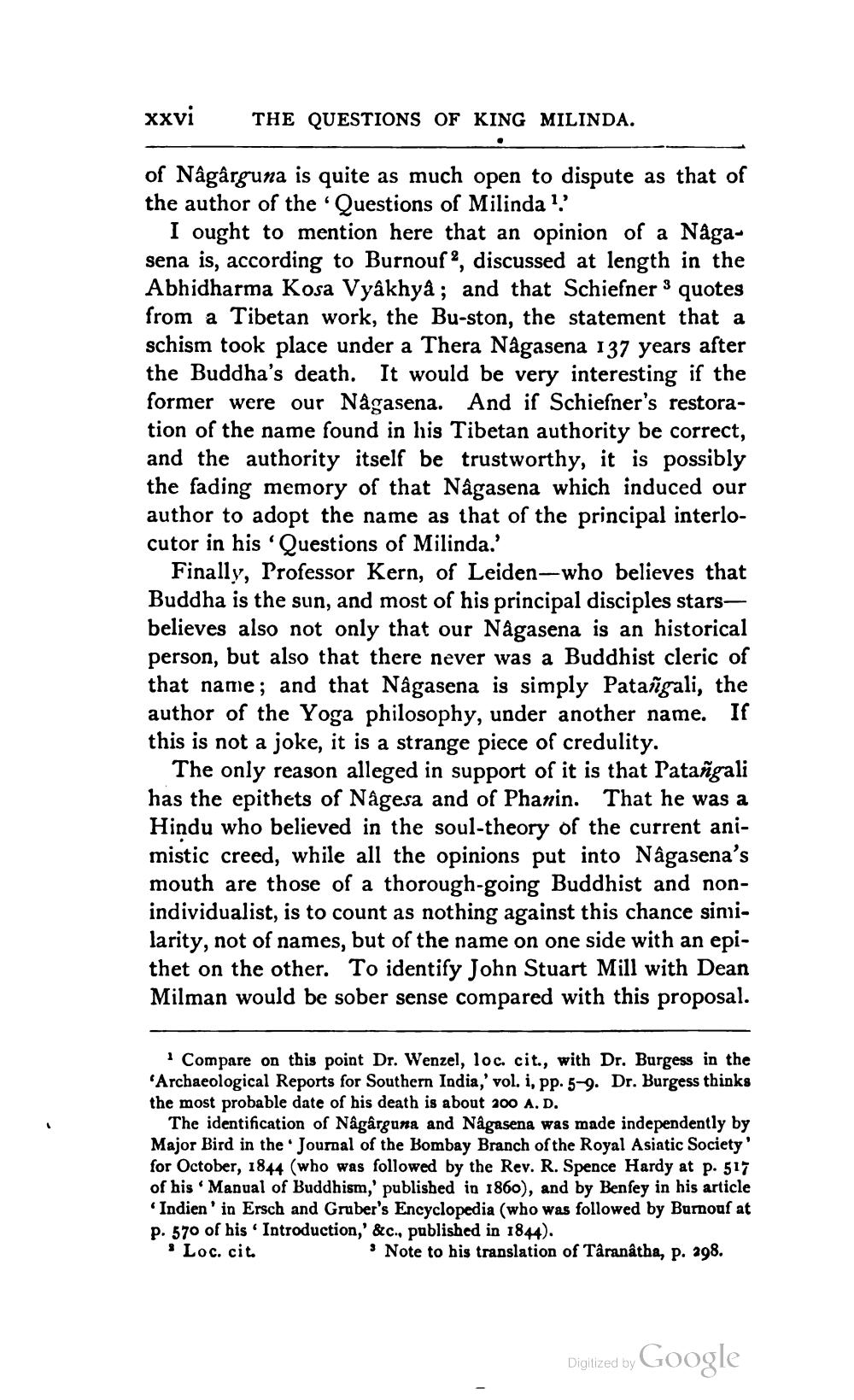________________
xxvi
THE QUESTIONS OF KING MILINDA.
of Nâgârguna is quite as much open to dispute as that of the author of the Questions of Milinda ?!
I ought to mention here that an opinion of a Någasena is, according to Burnouf?, discussed at length in the Abhidharma Kosa Vyakhyå; and that Schiefner 3 quotes from a Tibetan work, the Bu-ston, the statement that a schism took place under a Thera Nagasena 137 years after the Buddha's death. It would be very interesting if the former were our Nagasena. And if Schiefner's restoration of the name found in his Tibetan authority be correct, and the authority itself be trustworthy, it is possibly the fading memory of that Nagasena which induced our author to adopt the name as that of the principal interlocutor in his 'Questions of Milinda.'
Finally, Professor Kern, of Leiden-who believes that Buddha is the sun, and most of his principal disciples stars, believes also not only that our Någasena is an historical person, but also that there never was a Buddhist cleric of that name; and that Nagasena is simply Patañgali, the author of the Yoga philosophy, under another name. If this is not a joke, it is a strange piece of credulity.
The only reason alleged in support of it is that Patañgali has the epithets of Nâgesa and of Phanin. That he was a Hindu who believed in the soul-theory of the current animistic creed, while all the opinions put into Nagasena's mouth are those of a thorough-going Buddhist and nonindividualist, is to count as nothing against this chance similarity, not of names, but of the name on one side with an epithet on the other. To identify John Stuart Mill with Dean Milman would be sober sense compared with this proposal.
Compare on this point Dr. Wenzel, loc. cit., with Dr. Burgess in the 'Archaeological Reports for Southern India,' vol. i, pp. 5-9. Dr. Burgess thinks the most probable date of his death is about 200 A.D.
The identification of Nagârguna and Nagasena was made independently by Major Bird in the Journal of the Bombay Branch of the Royal Asiatic Society' for October, 1844 (who was followed by the Rev. R. Spence Hardy at p. 517 of his Manual of Buddhism,' published in 1860), and by Benfey in his article
Indien 'in Ersch and Gruber's Encyclopedia (who was followed by Burnouf at p. 570 of his . Introduction,' &c., published in 1844). Loc. cit.
* Note to his translation of Târanátha, p. 298.
Diglized by Google




